Motorola targets budget buyers with Moto G smartphone
- Published
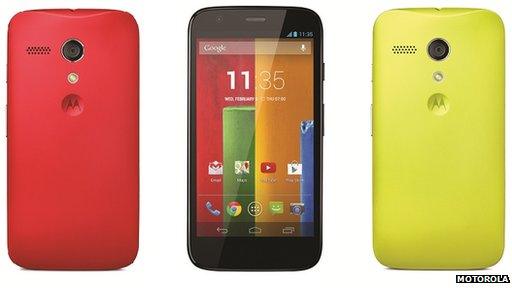
Moto G owners can customise the phone with a range of different-coloured back panels
Google's Motorola unit has launched a relatively low-cost smartphone that includes features more commonly found in higher-priced models.
The Moto G will be sold contract-free from £135 in the UK and $179 in the US.
The handset has a 4.5in (11.4cm) 720p high-definition screen, a five megapixel rear camera, a 1.3MP front one, and runs the latest versions of the Android operating system.
Analysts suggests the budget end of the market is set to enjoy huge growth.
"The second wave of smartphone adopters is now starting," said Francisco Jeronimo, a mobile device analyst at the consultancy IDC.
"This wave is characterised by consumers looking to get their first smartphone at the cheapest price they find.
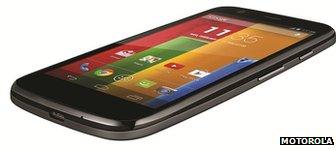
Motorola says the Moto G will get Android KitKat "within weeks"
"They don't have the need nor the money to afford the most advanced smartphones, as the first wave of adopters had. "
'Fast to assemble'
The Moto G - which supports 3G but not 4G networks - is being launched in 30 countries including the UK, US, France, Germany and parts of Latin America and Asia. That contrasts with the country's last model - the Moto X - which is currently only available in the US.
Its price makes it slightly cheaper than Samsung's Galaxy S3 Mini, HTC's Desire X and Sony's Xperia M but still more expensive than Huawei's Ascend G510.
However, Motorola's device is the only one of these to come preinstalled with the Android Jelly Bean operating system. The firm is also promising to release an upgrade to the newest version of its Android platform, KitKat, in the near future.
It also has the highest resolution display and is the only one to feature a quad-core, rather than dual-core, CPU (central processing unit). This should in theory allow it to offer superior processing power while minimising the toll on battery life.
Motorola's chief executive told the BBC it had helped cut each handset's cost by putting in a large orders for their components from the start.
"The engineers also designed this for cost - there's fewer pieces [and] it's designed to be easy and fast to assemble," said Dennis Woodside.
He added that unlike the Moto X, the company had opted not to build the device in the US.
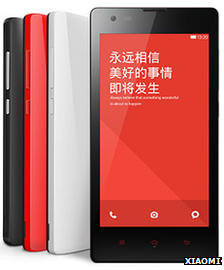
100,000 copies of the Hongmi were sold in two minutes when it launched
"It's assembled in China, Brazil and Argentina," he said. "We had to go with a cost-driven approach to put it together."
Cheaper rivals
Mr Woodside said the handset would be targeted at three groups:
People in developing countries who wanted to move from a basic "feature phone" to one that could run a wide range of apps
Students and children in richer nations, for whom price was still an issue
Existing smartphone owners frustrated by the prospect of spending £500 every couple of years to upgrade to another top-end model
Motorola is far from alone in targeting these segments.
Nokia's Lumia 520 - running on Microsoft's Windows Phone 8 platform - can be purchased contract-free for £100. The firm also offers the even cheaper Asha range of phones, which run a more limited choice of apps.
ZTE has released a smartphone powered by Mozilla's Firefox OS costing just £60.
Meanwhile, Xiaomi recently released Hongmi, a handset costing the equivalent of £80. Like the Moto G it runs Android Jelly Bean and has a quad-core CPU, but in addition offers a bigger screen and higher megapixel rear camera.
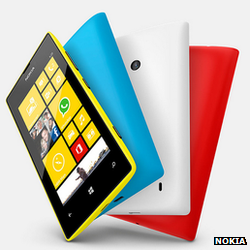
Nokia is expected to announced an update to the Lumia 520 soon
For now Xiaomi is focused on China, but the company's recent hire of Hugo Barra - a former Google executive - has been interpreted by many as signalling international ambitions.
Growing losses
According to a recent study, external by network equipment maker Ericsson, the number of smartphone subscribers will grow from 1.9 billion people today to 5.6 billion by 2019.
But despite an expanding market, Motorola has struggled.
In the July-to-September quarter its losses totalled $248m - 24% up from the same period in 2012.
Its US market share also fell over the same months, according to research company Comscore, external, despite the Moto X's launch.
"Although most vendors are still trying to enter the high-end of the market attracted by higher margins, they struggle to compete with Apple and Samsung, due their strong brands and colossal marketing budgets," said Mr Jeronimo.
"The mid- and the low-end of the market is where most companies are turning to to grow their handsets businesses.
"However, competing at lower price points represents a huge challenge for the less innovative manufacturers or those that are not efficient enough to squeeze each penny from their supply chain."
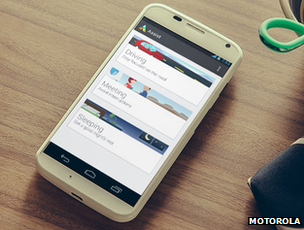
Motorola says it plans to release the Moto X in Europe some time in 2014
Google has the potential to earn money from Android handsets by taking a cut from apps and media sold via its Play Store, and adverts shown on its other apps.
Even so, Mr Woodside said Motorola intended to make a "fair profit" from the Moto G, adding that he believed the new model had the potential to prove more popular than the Moto X.
"It really addresses a larger market, frankly," he said.
"That's where the volume is. I don't want to give any specific forecasts but the opportunity is absolutely much bigger."
- Published17 October 2013
- Published31 October 2013
- Published1 August 2013